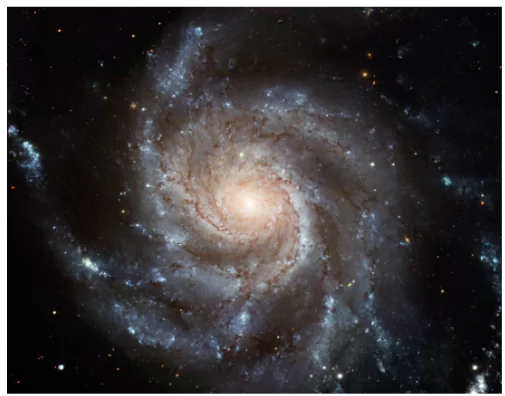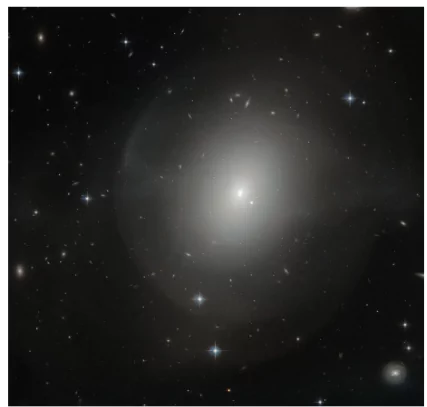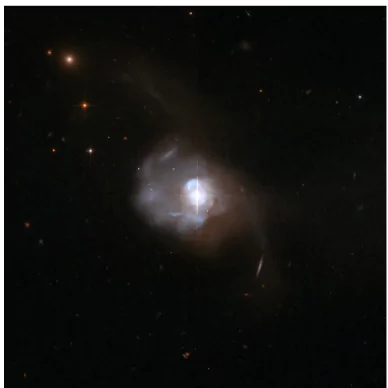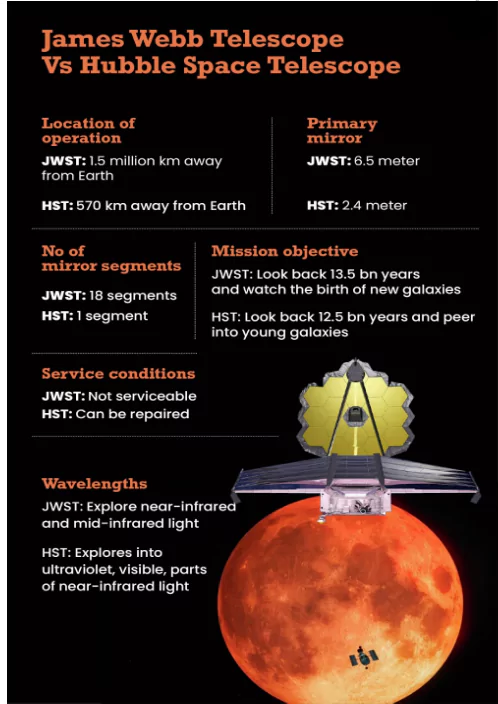Recently, a new study published in the Astrophysical Journal Letters questioned astronomers previously believed that spiral galaxies formed about 6 billion years ago
- The universe is about 13.8 billion years old and is home to different kinds of galaxies, from spiral to elliptical and those with or without bulges.
Enroll now for UPSC Online Classes
Types of Galaxies
Spiral Galaxies

|
Elliptical Galaxies

|
Quasars

|
- These galaxies resemble giant rotating pinwheels with a pancake-like disk of stars and a central bulge or tight concentration of stars.
- The spiral arms can be wound tightly or loosely.
- Thease are surrounded by halos, mixtures of old stars, star clusters, and dark matter
- The youngest stars form in gas-rich arms, while older stars can be found throughout the disk and within the bulge and halo.
|
- They have shapes that range from completely round to oval.
- Unlike spirals, elliptical galaxies usually contain little gas and dust and show very little organization or structure.
- The stars orbit around the core in random directions and are generally older than those in spiral galaxies since little of the gas needed to form new stars remains.
- Scientists think elliptical galaxies originate from collisions and mergers with spirals.
|
- Quasars are the most luminous type of active galaxy.
- They emit light across the electromagnetic spectrum, produce powerful particle jets, and can radiate thousands of times the energy emitted by a galaxy like the Milky Way.
- The nearest quasar, called Markarian 231, is located some 600 million light-years away.
|
Significance Of Findings
- The new findings could also affect what astronomers understand about the rate of the formation of stars in the universe.
Key Findings
Following are the key findings of the research:
- Older Theory Of Formation & Evolution Is Now Suspected
- Popular Belief In Astronomy: As the universe cooled down from a dense plasma state, it contained more and more hot gas.
- They formed clumps of matter that eventually gravitated to become galaxies.
- These early galaxies had irregular shapes and lacked disks.
- Spiral ‘arms’: But as they cooled as well, they formed hot, thick disks that later became thinner and finally spiral ‘arms’ — a process that took billions of years.
- Findings: Recent work shows that this cooling down and spiral formation occur around the same cosmic time
- Increased Fraction of Spiral Galaxies
- Researchers compared the number of spiral galaxies to the total number of galaxies.
- Between 3 billion and 7 billion years after the Big Bang, the fraction of spiral galaxies increased from about 8% to 48%.
- As the universe aged: Spiral galaxies became more populous even around the time star formation peaked.
- Prior observations: It indicated an increase from 5% to 30%.
- Future Galaxy Evolution
- Gas Depletion: Over time, spiral galaxies have less gas in their arms, slowing new star formation.
- Galactic Collisions: Predicted collisions, such as between the Milky Way and Andromeda, could restart star formation and create elliptical galaxies.
Check Out UPSC NCERT Textbooks From PW Store
Detecting Galaxies In The Early Universe
Methodology: Since light takes time to travel, scientists can use light from these galaxies as a way to peer back in time to study black hole growth and galaxy evolution
Usage of Telescope: James Webb Space Telescope (JWST) vs Hubble Space Telescope (HST)
- Initiation and collaboration: The JWST project began in 1996 as a collaboration between NASA, the European Space Agency (ESA), and the Canadian Space Agency (CSA).
- Successor to Hubble: It has been conceived as the next-generation space telescope succeeding the Hubble Space Telescope, with a focus on infrared astronomy.

|
![]() 4 Jul 2024
4 Jul 2024

